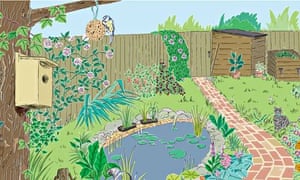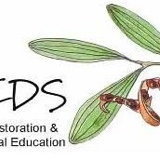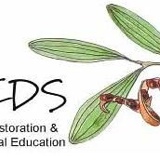Title Page
-
How Wildlife Friendly is my Garden
-
Conducted on
-
Location
-
Prepared by
-
Each element check box you tick, will build you Wildlife Garden score:
1-10% - You have a clean slate and need to work at building you Wildlife friend garden
11-25% - Your garden is a fledgling in the wildlife stake. Some great elements to build on.
26-50% - Now we are getting somewhere! You should be seeing increased pollinators and bird species!
51-75% - Your garden is a wonderful contribution to urban wildlife communities
76-90% - Brilliant! Time for you to start teaching your friends, family and neighbours how to create a wildlife oasis in the 'burbs. You should be getting rewarded with a range of insects, birds, frogs and reptiles.
90-100% - All bow down to the Guru, we are in the midst of Wildlife Gardening greatness. You are having a wonderfully positive impact on the natural world! -
Photo of garden
Layers
-
Leaf litter
-
Wildflowers
-
Common examples of Wildflower species:
- Bulbine bulbosa
- Pattersonia occidentalis
- Stylidium graminifolium
- Hibbertia sp.
- Helichrysum sp.
- Thysanotus patersonii
- Wahlenbergia stricta -
Tussock plants
-
Common examples of Tussock species:
- Themeda triandra
- Poa sp.
- Austrostipa sp.
- Lomandra longifolia
- Dianella sp.
- Gahnia sieberiana (large)
- Carex appressa (semi aquatic)
- Juncus sp. (semi aquatic)
- Baloskion tetraphyllum (semi aquatic) -
Ground covers
-
Common examples of Ground Cover species:
- Ajuga australis
- Brachyscome multifida
- Myoporum parvifolium
- Viola hederaceae
- Kennedia prostrata
- Chrysocephalum sp.
- Scaevola sp.
- Carpobrotus rossii -
Small shrubs (50cm-2m)
-
Common examples of Small to Medium shrub species:
- Goodenia ovata
- Indigofera australis
- Davesia latifolia
- Correa sp.
- Dodonea viscosum
- Philotheca sp. -
Large shrubs (2-5m)
-
Common examples of Large shrubs species:
- Prostanthera lasianthos
- Acacia verticillata
- Olearia lirata
- Melaleuca ericifolia
- Leptospermum continentale
- Banksia sp.
- Callistemon sp. -
Trees
-
Common examples of Tree species:
- Allocasuarina sp.
- Acacia melanoxylon
- Eucalyptus sp.
Habitat
-
Mulch
-
Logs or wood piles
-
Rock pile
-
Pond with aquatic plants
-
Common examples of Aquatic/pond species:
- Persicaria decipiens
- Ornduffia sp.
- Alisma plantago-aquatica
- Myriophyllum sp.
- Azolla sp.
- Carex sp.
- Triglochin procerum
- Lycopus australis
- Lythrum salicaria -
Prickly shrubs
-
Common examples of Prickly shrub species:
- Lomandra longifolia
- Hakea sp.
- Acacia verticillata
- Acacia paradoxa
- Leptospermum continentale -
Pockets of dense vegetation
-
Plants which provide nesting material
-
Common examples of plants which provide Nesting Materials:
- Lomandra longifolia
- Poa sp.
- Clematis microphylla
- Melaleuca ericifolia
- Melaleuca laevigatum -
Trees with bark sheets
-
Possum/mammal box
-
Bird box
-
Bat box
-
Frog pipes
-
Bee hotel
Food Source
-
Winter flowering plants
-
Common examples of Winter Flowering species:
- Indigofera australis
- Hakea nodosa
- Acacia melanoxylon
- Acacia verticillata
- Acacia suaveolens -
Autumn flowering plants
-
Common examples of Autumn Flowering species:
- Hakea nodosa
- Banksia marginata
- Lycopus australis
- Persicaria decipiens
- Allocasuarina sp.
- Ruby's parvifolius -
Spring flowering plants
-
Common examples of Spring flowering species:
- Indigofera australis
- Goodenia ovata
- Chrysocephalum sp.
- Correa reflexa
- Hardenbergia violacea
- Acacia melanoxylon
- Kennedia prostrata
- Brachescome multifida -
Summer flowering plants
-
Common examples of Summer Flowering species:
- Goodenia ovata
- Prostanthera lasianthos
- Chrysocephalum sp.
- Lomandra longifolia
- Lythrum salicaria
- Brachyscome multifida
- Wahlenbergia stricta
- Dianella sp.
- Persicaria decipiens
- Myoporum parvifolium -
Small fruit/berry bearing plants
-
Common examples of small fruit/berry bearing plants:
- Dianella sp.
- Coprosma quadrifida
- Hardenbergia violacea
- Rubus parvifolius -
Large Fruit trees (un-netted)
-
Common examples of fruit trees:
- Plum trees
- Apple trees
- Nectarine trees
- Citrus trees
- Loquat trees -
Caterpillar foods
-
Common examples of Caterpillar Food plants:
- Native grasses
- Citrus leaves
- Gum leaves
- Wattle leaves
- Herbaceous leaves
- Lichen -
Nectar plants
-
Common examples of Nectar Providing plants:
- Correa reflexa (Birds, Insects)
- Scaevola sp. (Insects)
- Kennedia prostrata (Birds, Insects)
- Grevillea sp. (Birds, Insects)
- Prostanthera lasianthos (Birds)
- Banksia sp. (Birds, Insects, Mammals)
- Hakea sp. (Birds, Insects)
- Melaleuca sp. (Birds, Insects)
- Callistemon sp -
Seed producing plants
-
Common examples of Seed Producing plants:
- Microleana stipoides
- Poa sp.
- Themeda triandra
- Lomandra longifolia
- Juncus sp.
- Hardenbergia violacea
- Kennedia prostrata
- Acacia sp.
- Pultenea sp. -
Pollen producing plants
-
Common examples of Pollen Producing species:
- Dianella sp.
- Bursaria spinosa
- Olearia sp.
- Callistemon sp.
- Helichrysum sp.
- Prostanthera lasianthos
- Stylidium graminifolium
- Brachyscome multifida
- Westringia sp.
- Eucalyptus sp.
- Hardenbergia sp.
- Melaleuca sp.
- Acacia sp.
Powerhouse plants
-
Notable species which service multiple functions and/or have large pollen production
-
Themeda triandra
-
Poa sp.
-
Microleana stipoides
-
Dianella sp.
-
Philotheca sp.
-
Melaleuca sp.
-
Bursaria spinosa
Water
-
Water feature
-
Water feature platform - semi submerged logs - semi submerged rocks - floating aquatic plants
-
Common examples of Water Feature Platforms:
- Semi-aquatic floating vegetation
- Semi submerged logs
- Semi submerged rocks
Management Practices
-
Insecticide free garden
-
Herbicide free garden












